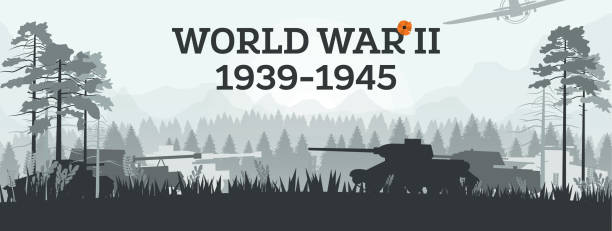World War II (1939-1945):The making of a new World Order
World War II was a global conflict that lasted from 1939 to 1945, involving most of the world's nations. It was the deadliest and most widespread war in history, resulting in profound political, social, and economic changes. Here is an overview of World War II:
1. Background:
- Treaty of Versailles: The harsh terms of the Treaty of Versailles, which ended World War I, contributed to economic instability and political grievances in Europe.
- Rise of Totalitarian Regimes: The 1930s saw the rise of fascist and militaristic regimes in Germany (under Adolf Hitler), Italy (under Benito Mussolini), and Japan.
- Expansionist Ambitions: These regimes sought territorial expansion and pursued aggressive foreign policies.
2. Key Events and Phases:
- 1939: Germany's invasion of Poland on September 1, 1939, marked the beginning of World War II in Europe.
- 1940-1941: Germany's Blitzkrieg tactics led to the fall of France, the Battle of Britain, and the invasion of the Soviet Union.
- 1941-1945: Japan's attack on Pearl Harbor on December 7, 1941, brought the United States into the war. This period included significant battles in Europe, Africa, the Pacific, and Eastern Front.
- 1944-1945: The Allied D-Day landings in Normandy (June 6, 1944) and the Soviet advance marked turning points in the war.
3. Major Factions:
- Allied Powers: Led by the United States, the United Kingdom, the Soviet Union, and China, the Allies included many other nations fighting against the Axis powers.
- Axis Powers: Led by Nazi Germany, Imperial Japan, and Fascist Italy, the Axis included other nations aligned with these powers.
4. Holocaust:
- The Holocaust was the systematic genocide carried out by the Nazis, resulting in the murder of approximately six million Jews and millions of others, including Romani people, disabled individuals, and political dissidents.
5. Atomic Bombs:
- In August 1945, the United States dropped atomic bombs on the Japanese cities of Hiroshima and Nagasaki, leading to Japan's surrender and the end of World War II.
6. Consequences:
- Casualties: World War II resulted in an estimated 70-85 million fatalities, making it one of the deadliest conflicts in history.
- War Crimes Trials: The Nuremberg Trials and Tokyo Trials prosecuted war criminals from Nazi Germany and Imperial Japan.
- Formation of the United Nations: The United Nations was established in 1945 to promote international cooperation and prevent future conflicts.
- Decolonization: The war contributed to the dismantling of colonial empires and the emergence of new nations.
- Cold War: The ideological and geopolitical rivalry between the United States and the Soviet Union emerged after World War II, leading to the Cold War.
World War II fundamentally reshaped the world order, with the United States and the Soviet Union emerging as superpowers, and Europe experiencing a process of integration to prevent future conflicts. The war had a profound impact on the course of history, with lasting consequences that continue to shape global politics and society.



Comments
Post a Comment